By Katt Hendershot, Operations Specialist for The Wild Source
When planning a safari, you probably picture dramatic scenes straight out of a nature documentary, with David Attenborough’s voice narrating: “This pride of lions is on the hunt, seeking a meal for their young.” Maybe you’ve already Googled the animals of Africa and come across the famous Big Five: lion, leopard, rhinoceros, elephant, and African buffalo. Or perhaps you’re imagining the Great Migration, where millions of wildebeest and zebras move through the Serengeti and Maasai Mara in a thundering spectacle.
These are the headline acts of the savannah, but they’re just the beginning. Africa is home to hundreds of other mammal species, many of which never get their own documentary series. And when they do appear, it’s often only as prey for the big predators.
This post is all about giving some overdue attention to the unsung heroes of the African landscape: the ungulates. These hoofed mammals make up the majority of what you’ll actually see on safari. Sure, everyone knows giraffes and zebras, but what about the elegant kudu, the long-necked gerenuk, or the tiny dik-dik? They may not be household names, but they’ve got just as much charm, and it’s about time they got some love.
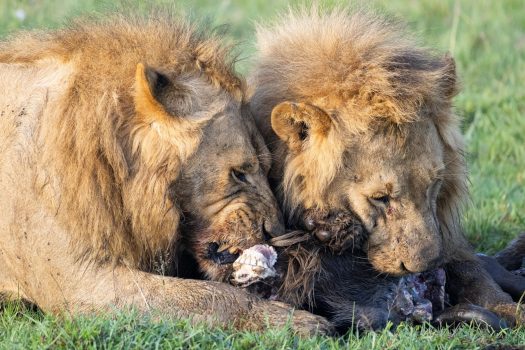
Wait, What’s an Ungulate Again?
Let’s get a bit biological: ungulates are hoofed mammals divided into two main groups—even-toed and odd-toed. Each group includes several taxonomic families found across safari regions. The odd-toed group includes two familiar faces: rhinos and equines (like zebras and wild asses). In the even-toed group, you’ll find hippos, pigs (including warthogs, red river hogs, and bush pigs), and giraffes.
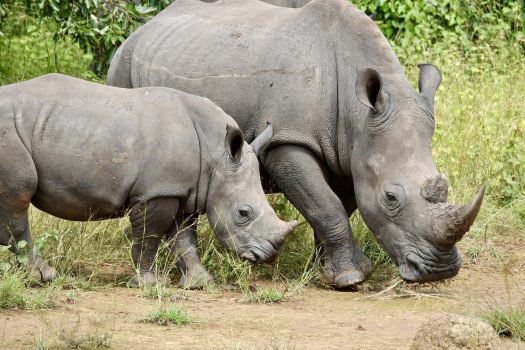
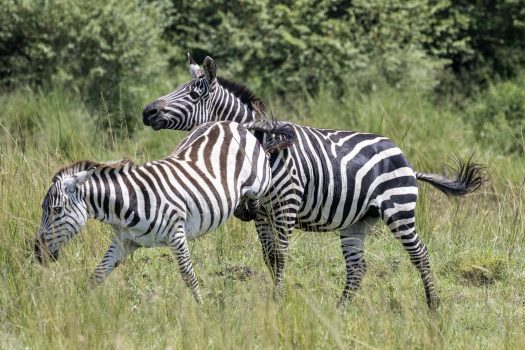
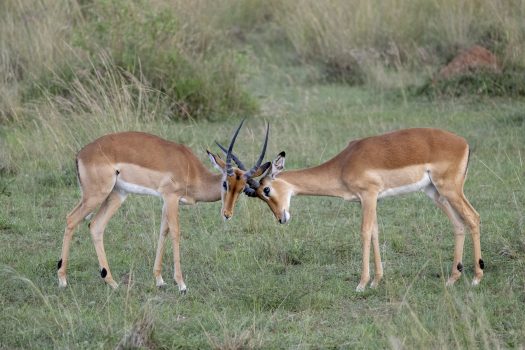
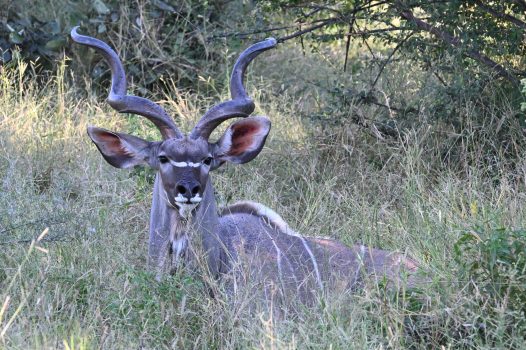
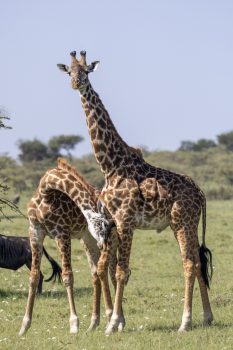
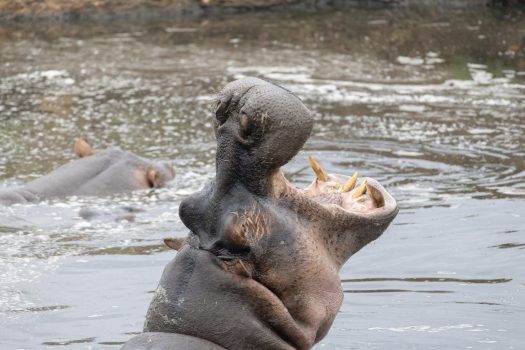
Let’s introduce a few of the lesser-known members of the even-toed ungulates.
Okapi, relatives of giraffes with zebra-like stripes on their legs, live deep in the Congo rainforest and are endangered and incredibly rare to see. Chevrotains, often called mouse-deer and belonging to the family Tragulidae, are very small and considered the most primitive even-toed ungulates; they are common in the tropical forests of West and Central Africa rather than the savanna or open bush typical of Southern and Eastern African safaris.
The family of Bovids include a wide variety of cattle, antelope, and buffalo, usually characterized by hollow, unbranched horns. Whether you are in Southern or Eastern Africa, you will see many bovids on safari. Bovids can be further divided into subfamilies.
- Bovines include both the spiral-horned antelope and the powerful African buffalo. Spiral-horned antelope are striking and agile, with large twisted horns and a preference for wooded or thickly vegetated habitats. This group includes greater kudu, nyala, bushbuck, sitatunga, lesser kudu, and eland, which is the largest of all antelope species. African buffalo, by contrast, are bulkier and more aggressive, often seen in large herds across the savannas and floodplains of East and Southern Africa.
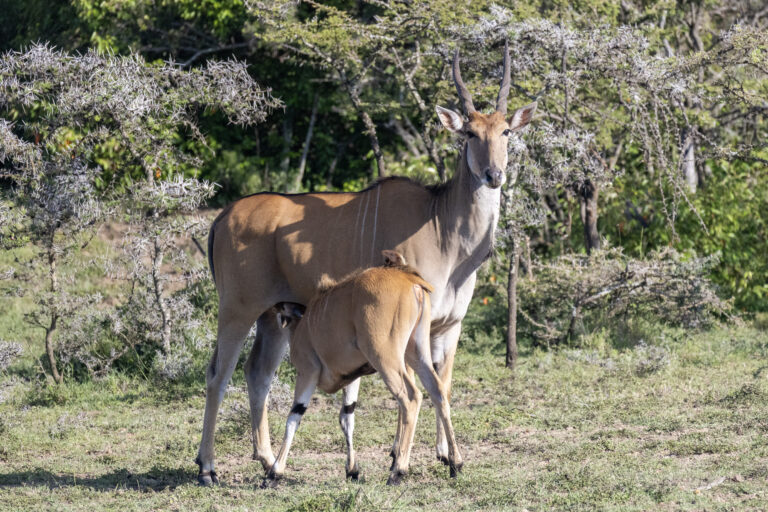
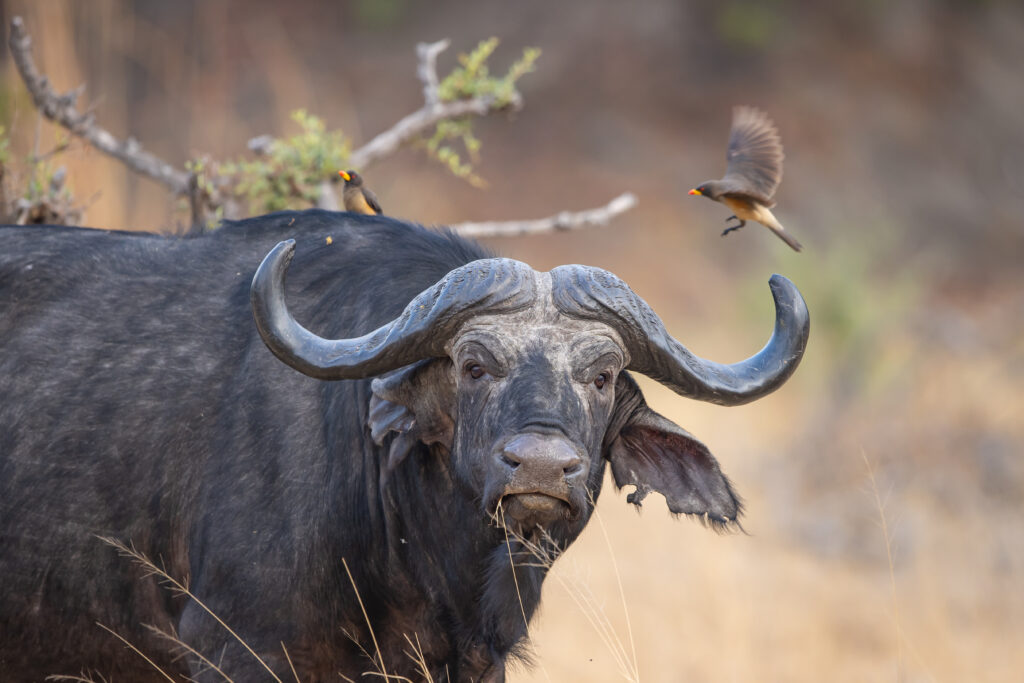
- Horse-like antelope are bovids with a horse-like appearance, featuring a stocky build and long face. On safari, you are likely to see sable antelope, common in Botswana, South Africa, Namibia, Zimbabwe, Zambia, and parts of Tanzania and Kenya, as well as roan antelope, mainly found in Southern Africa with occasional sightings in Tanzania.
- Hartebeest and wildebeest are grazing antelopes adapted to open plains. You may be familiar with wildebeest and their massive Serengeti migrations. Hartebeest will be discussed further in the next section.
- Reedbuck and allies are typically found near water and include medium-sized antelopes such as reedbuck, waterbuck, kob, and lechwe.
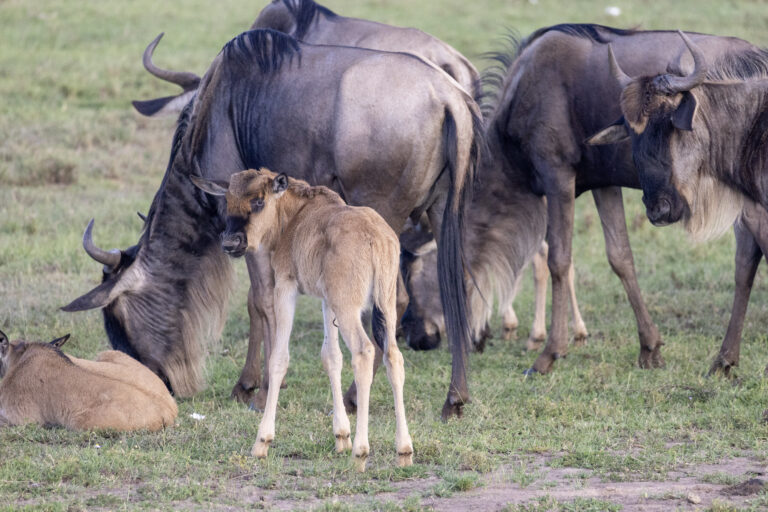
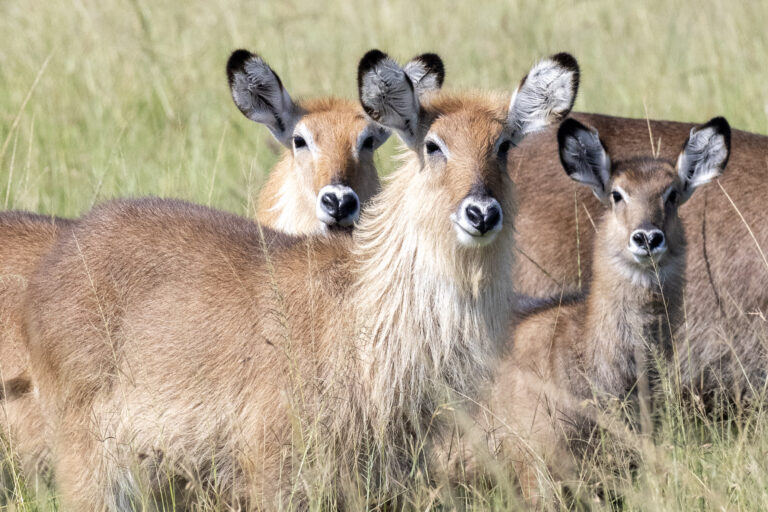
- Duikers are small to medium antelopes that are mostly shy and elusive. There are twenty-two species of duikers across Africa, but the common duiker and blue duiker are most often seen on safari.
- Small gazelles and relatives form a broad group that includes gazelles, blackbuck, springbok, gerenuk, dibatag, and dik-dik. They are often found in open savannas and arid environments.
Favorite Wild Source Ungulates
Dik-Diks
Dik-diks are small antelopes, with the largest reaching about 15.5 inches (39 cm) at the shoulder. There are four species of dik-dik that live throughout the shrublands and savannahs of eastern Africa, preferring areas with good cover but not grass that’s too tall for them. Dik-diks are preyed upon mainly by various cats, hyenas, and wild dogs.
Their name comes from the distinctive whistle females make when threatened. Males have small horns and tufts of hair on top of their heads that stand upright. Just below their eyes, dik-diks have a black spot caused by a preorbital gland that produces a dark, sticky secretion used to mark territory by rubbing it on grass or sticks. One of their most notable features is an elongated snout that helps prevent overheating, allowing them to survive temperatures up to 104 °F (40 °C). Dik-diks are monogamous, spending an estimated 64% of their time together—which is more than some human couples can say!
Seen on safari in: Kenya, Tanzania, Namibia
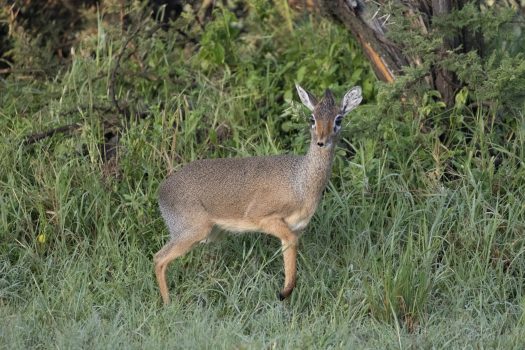
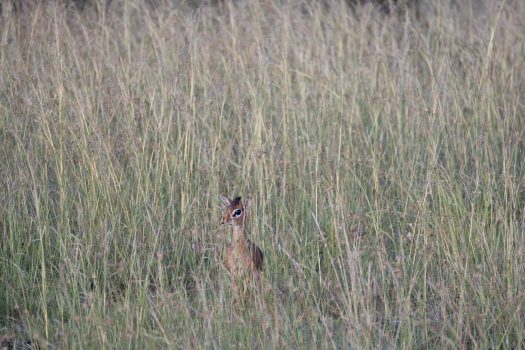
Thompson & Grant’s Gazelles
While sipping your gin and tonics at sundown, you might spot the other G&T of the safari: Thomson’s gazelles (affectionately called “Tommies”) and Grant’s gazelles.
Named after Scottish explorer Joseph Thomson, Thomson’s gazelles are smaller antelopes, standing up to 28 inches (71 cm) tall. Despite their size, their main predator is the cheetah, which means they’ve evolved to be fast, reaching speeds of up to 55 mph (88 km/h). They sport a distinct black stripe along their side that separates their tan back from their white belly, giving them a sleek, racing-stripe look. Both males and females have horns, though some females may be hornless.
Grant’s gazelles, named after another Scottish explorer, James Grant, are larger and more robust. While they lack the black side stripe of the Thomson’s, they have more pronounced white facial markings and a white rump patch that extends over the top of the tail. Their horns are longer and lyre-shaped, especially in males.
To tell them apart, look for size (Grant’s are noticeably larger), the presence or absence of the black side stripe (Thomson’s have it), and whether the white rump patch curls up over the tail (a key feature of Grant’s).
Seen on safari in: Kenya and Tanzania
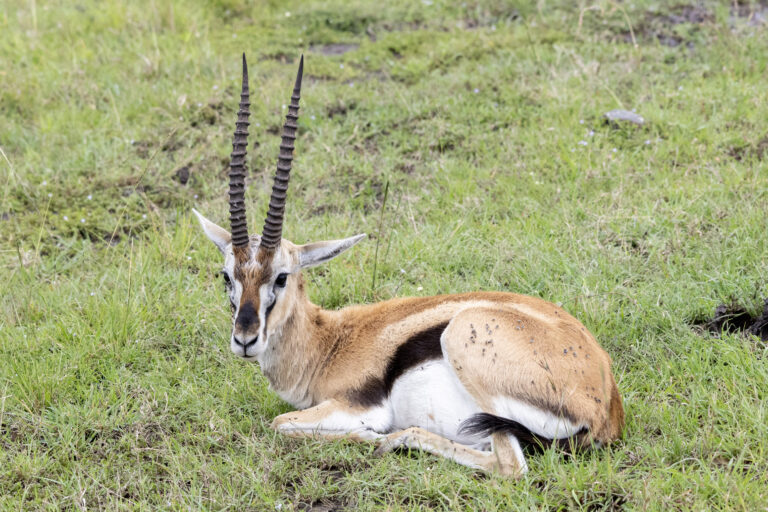
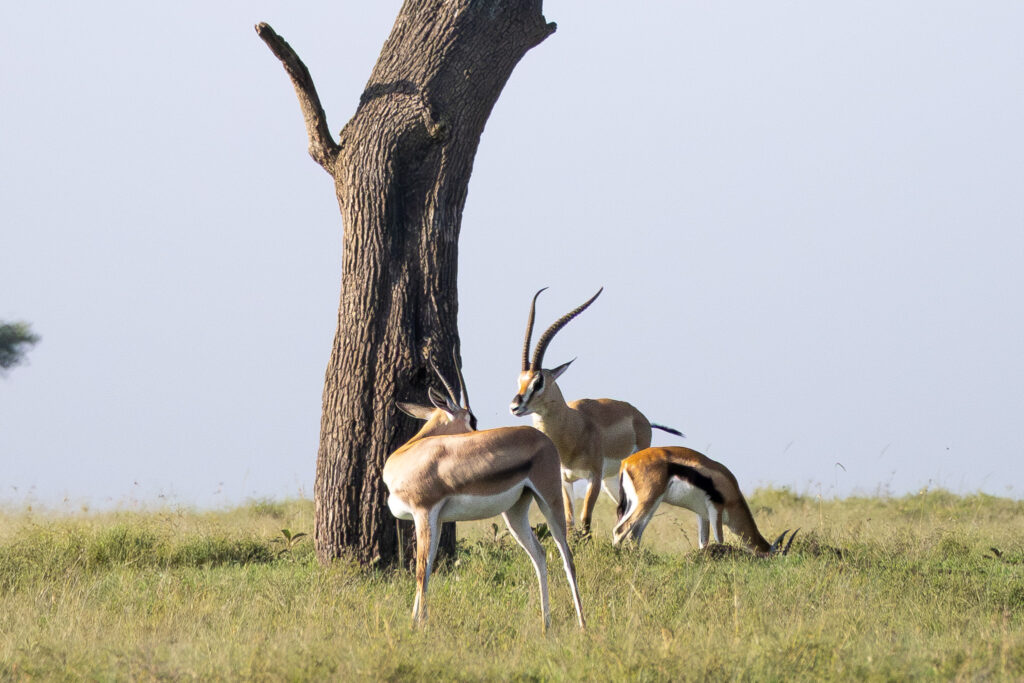
Gerenuks
Gerenuks stand out among antelopes thanks to their unusual proportions and behavior. With their long necks, tiny heads, and slender limbs, they’re definitely a sight to see. Thanks to strong hind legs and a specially adapted vertebra, they can stand upright on their back legs to reach higher branches. When on all fours, they stand up to 63 inches (160 cm) tall from head to toe, but when reaching up, they can pull down branches as high as 8 feet (2.4 meters) off the ground using their front legs for support.
Seen on safari in: Kenya and Tanzania
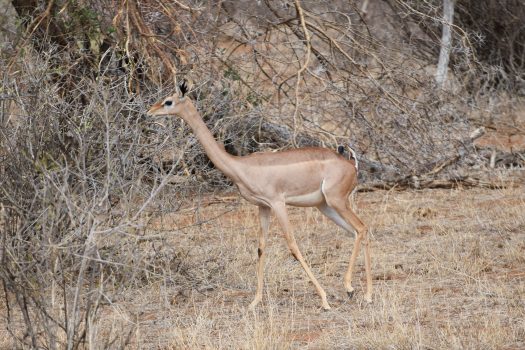
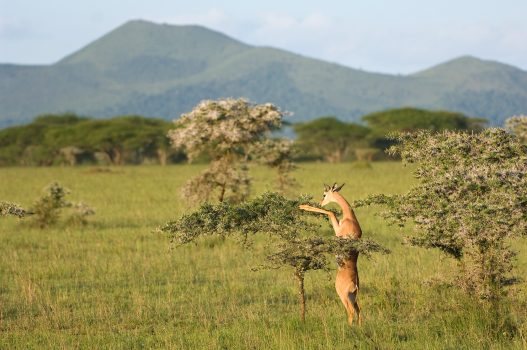
Kudus
Kudus come in two varieties: greater kudu and lesser kudu. While they look quite similar, the greater kudu is one of the largest antelope species, weighing up to 690 pounds (313 kg), which is about 460 pounds (209 kg) more than the lesser kudu. Kudus are known for their distinctive white stripes, the male’s facial “mask,” and impressive spiral horns. Greater kudu herds rarely exceed 40 individuals, and their home range can span between 800 and 1,500 acres (320 to 610 hectares). In contrast, lesser kudus tend to occupy smaller, more densely vegetated territories.
Seen on safari in: Mainly South Africa, Namibia, Botswana, Zambia, Zimbabwe, Mozambique, and Malawi, with occasional isolated herds in Tanzania and Kenya.
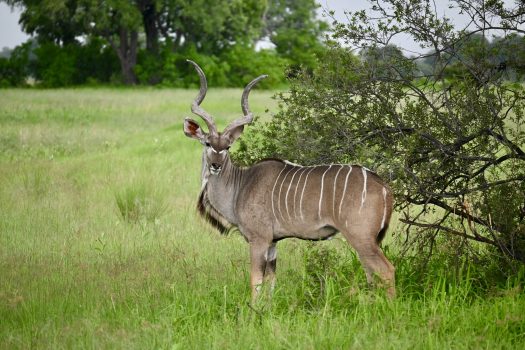
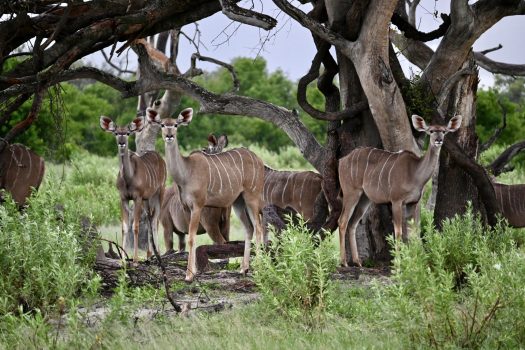
Nyala
Nyala are striking, spiral-horned antelopes with markings similar to kudu. They are considered the most sexually dimorphic of all antelope species (meaning males and females look very different from each other). Males are significantly larger, with shaggy dark grey coats, long spiral horns tipped with yellow, and a prominent dorsal crest and mane. Females, by contrast, are smaller, reddish-brown, hornless, and marked with distinct white stripes and spots.
Despite their bold markings, nyala are shy and highly responsive to warning calls. Females use a high, dog-like bark to alert one another and often react to alarm calls from impala, baboons, and kudu. With predators such as lions, leopards, cheetahs, spotted hyenas, African wild dogs, and Nile crocodiles. Additionally, with threats to their young from baboons and raptors, it makes sense that they remain constantly alert.
Seen on safari in: Malawi, Mozambique, South Africa, and Zimbabwe. They have also been introduced to Botswana and Namibia.
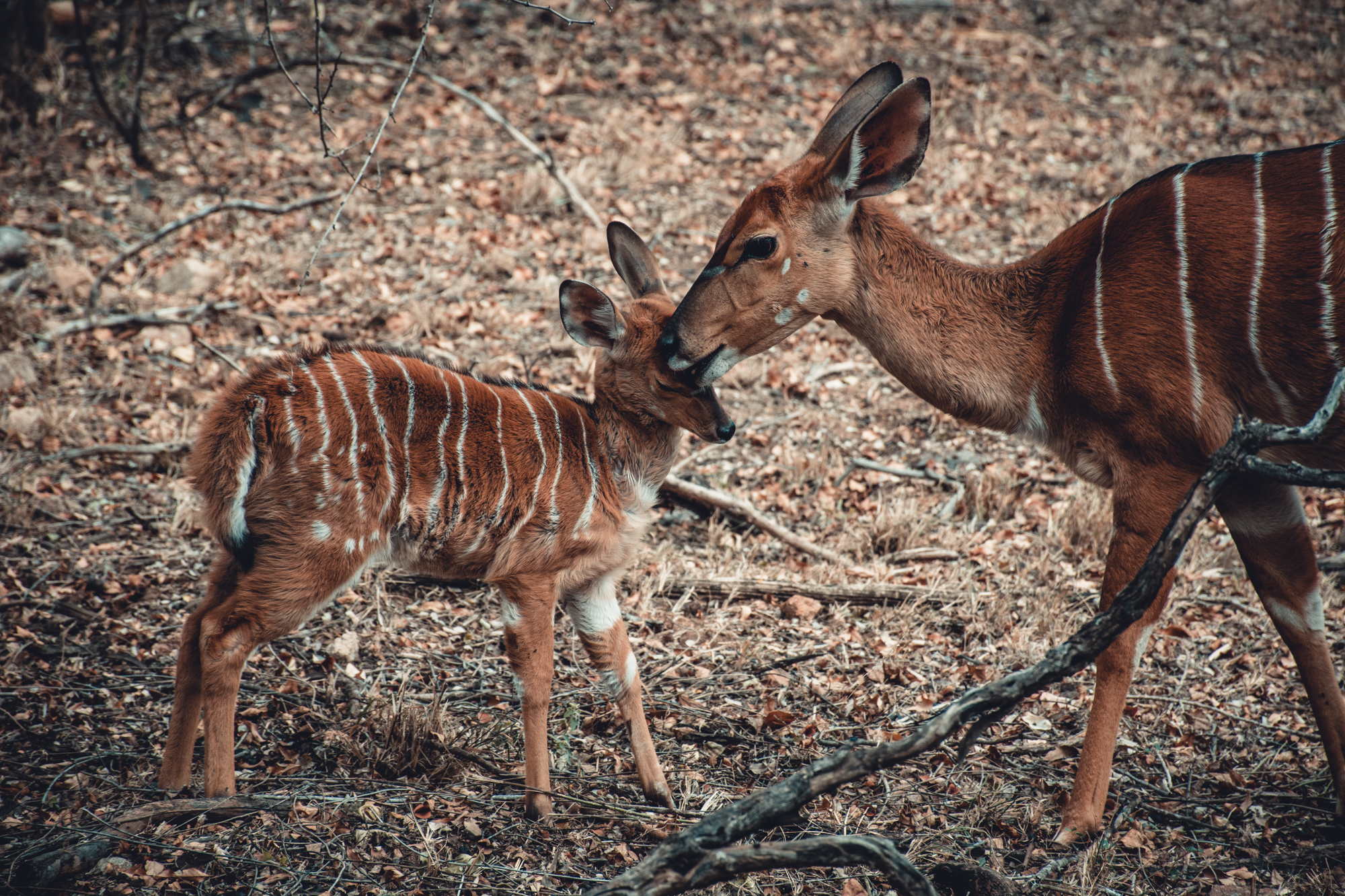
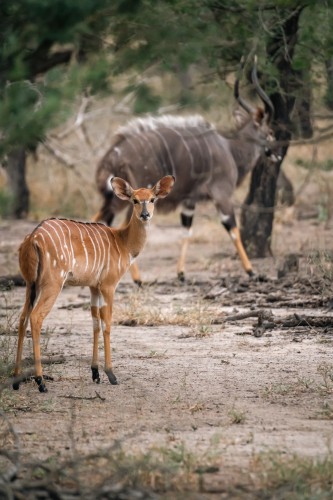
Topi & Hartebeest
Hartebeest are the sole members of the genus Alcelaphus. Both males and females have horns and are often seen in herds ranging from 20 to 300 individuals. They prefer dry savannahs and wooded grasslands and have even been reported living at altitudes up to 13,000 feet (3,960 meters) on Mount Kenya. Their distinctive horns can grow up to 28 inches (71 cm) long. In western hartebeest, the horns are thick and uniquely shaped. They are broadly U-shaped when viewed from the front and Z-shaped from the side, curving backward at the base, then forward, and ending in a sharp backward hook.
Similar in appearance but belonging to the genus Damaliscus, topi are darker in color and have less angled, lyre-shaped horns. Males can grow quite large, averaging around 300 pounds (136 kg). One notable adaptation of the topi is that if they have enough green grass, they don’t need to drink water. A handy way to distinguish a topi from a hartebeest is by their “blue jeans”—a bluish coloration on the upper legs that topi display.
Seen on safari in: Topi – Kenya, Rwanda, Tanzania, and Uganda; Hartebeest – Botswana, Kenya, Tanzania, Namibia, Uganda, Mozambique, Zambia, Zimbabwe, South Africa, and Malawi
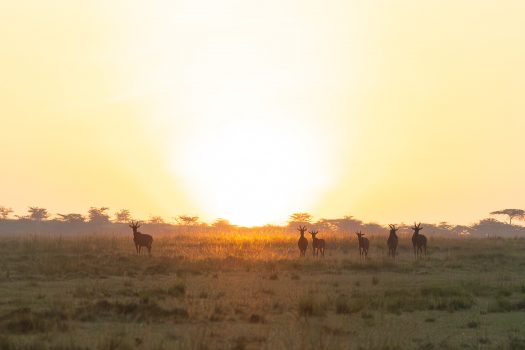
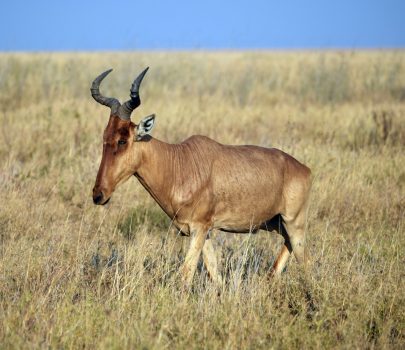
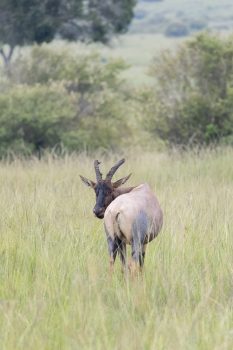
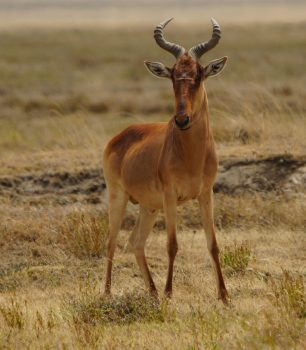
Final Thoughts
Did you notice something missing from the list of safari countries? Madagascar doesn’t have any true ungulates. The island’s only native hoofed mammals were three species of hippopotamus which are all now extinct. So if you’re hoping to see Africa’s incredible variety of hoofed animals, you’ll need to stick to the mainland.
While the Big Five might get all the headlines, it’s the ungulates that truly define the safari experience. From towering giraffes to tiny dik-diks, these hoofed mammals fill Africa’s landscapes with movement, color, and character. They’re the animals you’ll see most often on game drives, and once you start noticing them, you realize how much they shape the rhythm of the bush. Whether it’s a kudu slipping through the trees or a herd of topi grazing under the sun, these creatures deserve just as much attention as their star studded peers.